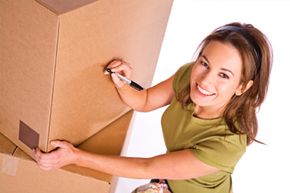If you're starring in a 1980s sitcom, then the scene where you pick up a moving box full of stuff and the bottom falls out is hilarious. But in real life, there's no laugh track when eight of your best china dishes crash to the floor. So, it's a good idea to learn some packing skills basics before you start filling cardboard boxes with 80 pounds of precious -- and pricey -- dinnerware.
Is there an art to packing a box? Yes. Is there a strategy for labeling and organizing those boxes? Yes. Is there a good reason you should pack two months in advance? Yes. Find out more on the next 10 pages.
Advertisement
